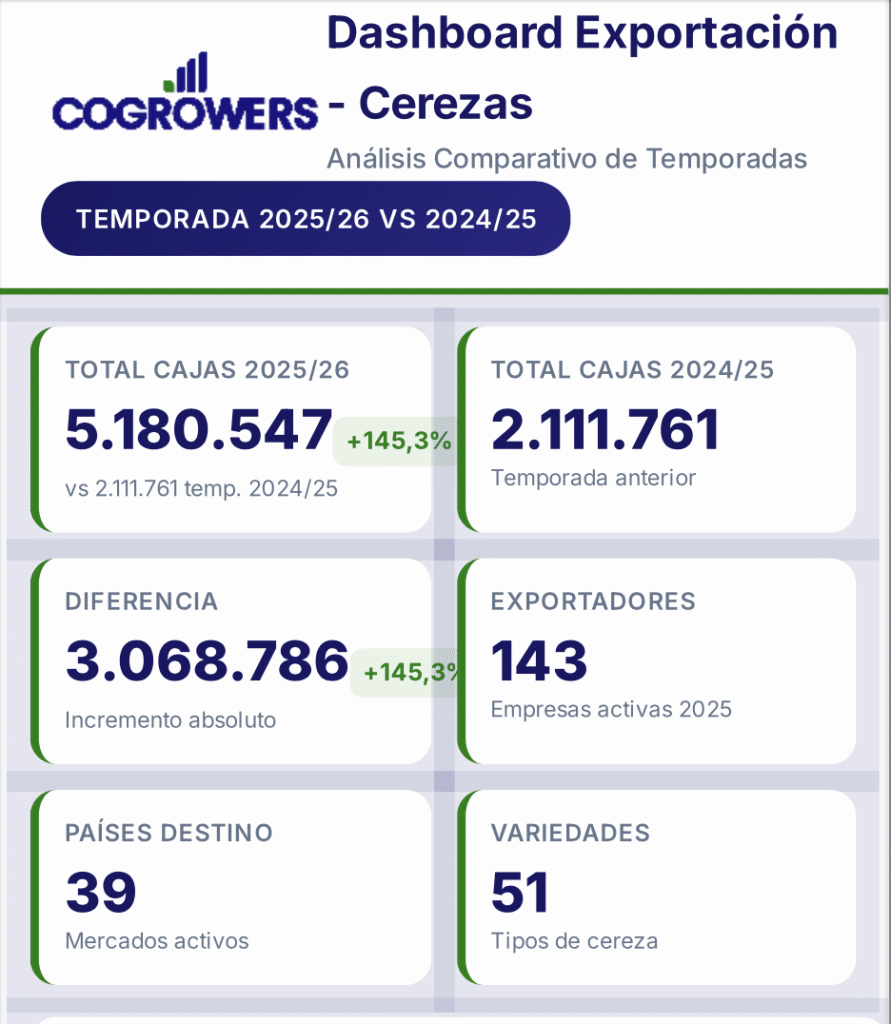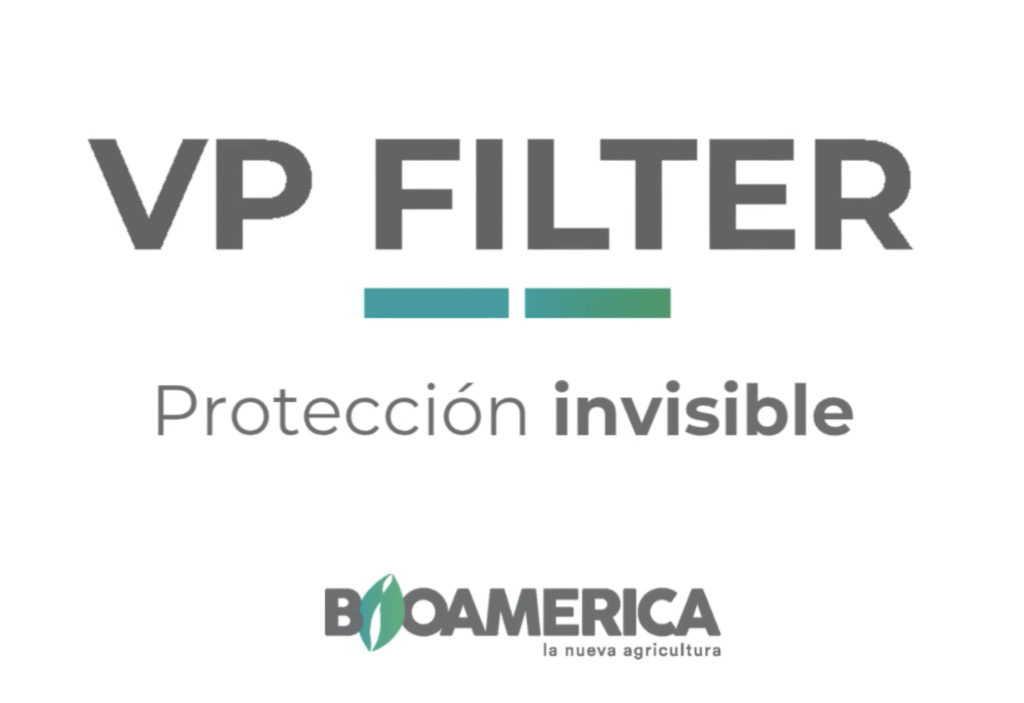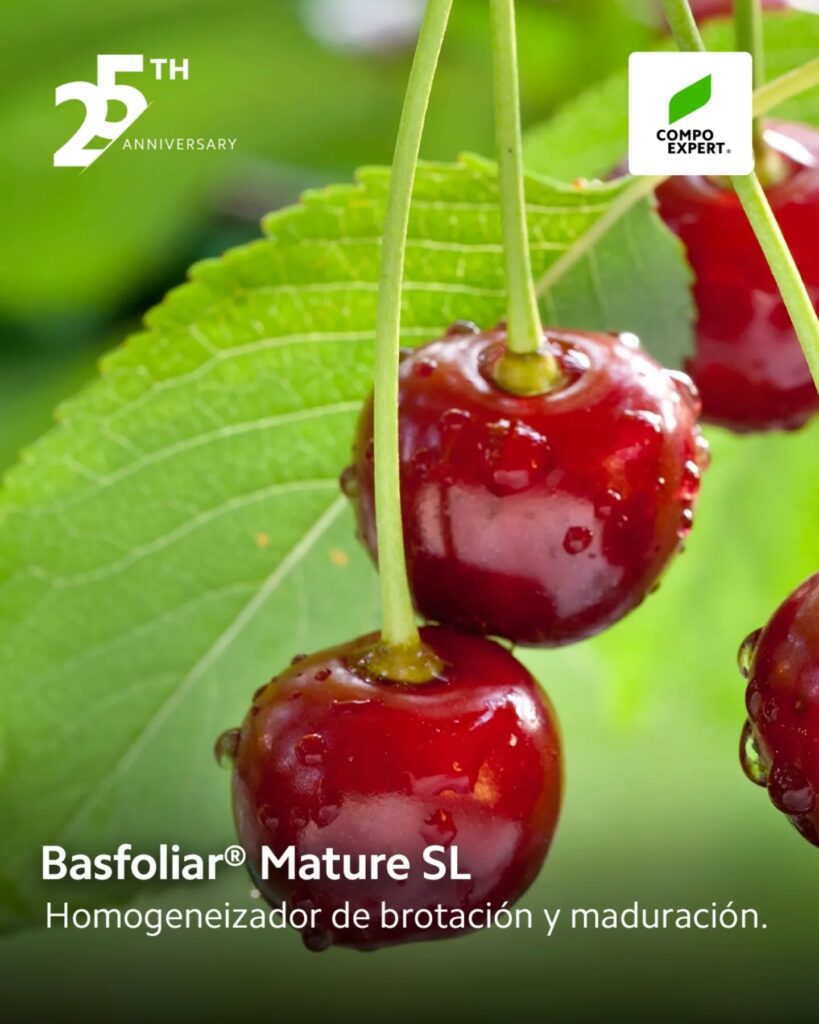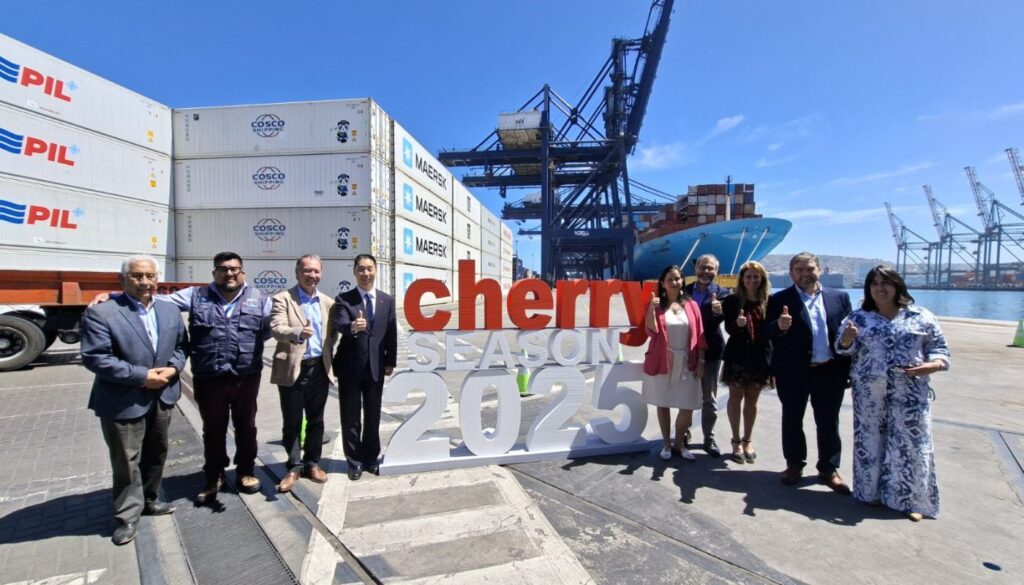In 2023, the Chinese New Year (CNY) will be celebrated on January 22, 10 days earlier than in 2022, where domestic cherry producers already had problems getting their fruit before the oriental holiday. What to do now....?
After three complex seasons for cherry producers, in terms of weather events, pandemics, phytosanitary controls and serious logistical problems, 2023 brings with it a new challenge: an early Chinese New Year and, consequently, less time to reach the destination and obtain better returns.
He Chinese New Year (CNY) marks a turning point in cherry exports to China, the main destination market for this fruit, as it is a date of high demand for cherries, and it is also considered a precious gift on said holiday. The day on which it is celebrated is very relevant for the national cherry industry, as cherry prices vary drastically before and after the holiday.
In 2022, the CNY was celebrated on February 1, 10 days earlier than in 2021, which created a complex scenario for a large part of Chilean cherry exporters, mainly for those in later areas. Those who harvested from October onwards, in the Ovalle area for example, had to face the uncertainty of China's tightening of phytosanitary controls, but they benefited from the high prices that cherry varieties always receive.
In central Chile, the earliest varieties harvested up to approximately December 15th managed to arrive before the Chinese New Year, considering also the logistical complexities that made a trip that normally took 30 days take 45-50 days. Those who harvested after December 20th arrived after the holiday, when there are also several days of commercial recess in the markets, and prices fall drastically.
So what to do when faced with a Chinese New Year that will be celebrated 10 days earlier, as will happen in 2023? The answer is not one, nor is it simple, but it is possible to start by evaluating actions that must be taken into account this season, in terms of harvest or its advance.
With calculator in hand
If Chile wants to have the best cherry sales, according to history, it is necessary to arrive between 7 and 5 days before the Chinese New Year, that is, if this celebration is on January 22, the fruit should be available between January 16 and 17 to be able to sell on that date and thus achieve the highest prices; if you have to be present in the Chinese market on that date, considering a normal logistic condition, you should consider 30 days before to finish the harvest or to pack that fruit, being the deadline packing on December 15th; this means that all the harvest done before December 12th, considering that there can be three days between the end of the harvest and packing at most, is the fruit that could opt to have a good position in China in the different markets.
There are areas and varieties where this scenario will naturally occur, for example Royal Dawn, a large part of Santina from the first part of the season and even a no less important part of Lapins that can be harvested until December 10, in addition to Bing, Stella and others, which means that there is a section of the production that will arrive in time, without major problems, for marketing prior to the festival in the Asian giant.
The point now is what to do with the fruit that is harvested after the aforementioned date; it is evidently necessary to generate some kind of strategy that allows for progress, obviously taking into account the productive potential.
The possible scenarios for the 2022-23 season are as follows:
- Early fruit that will be harvested until December 10-12.
- Mid-season fruit to be harvested between December 15 and 22 (Bing, Lapins, part of Kordia and Sweetheart).
- Late fruit to be harvested after December 20-22 (much of Sweetheart and Regina, and Lapins from later areas.
The first scenario does not require further analysis, since, as noted above, there are early areas and varieties that will naturally arrive in China before the New Year. However, the second scenario is the one that best suits the option of using early phenology strategies; of course, these must ensure productive potential, without assuming such great risks from a climatic point of view due to these strategies of advancing phenology.
It makes little sense, considering the final business, to risk indiscriminate dormancy-breaking (RD) strategies without carrying out the corresponding analyses to further advance the areas in which work is being carried out; although it can be carried out, it is necessary to take into account the risks that this implies, mainly frost, so it is necessary to have some control mechanism for such climatic events that allows weighing up any significant risk associated with the loss of production potential.
The third scenario, that is, the fruit that will be harvested after December 20-22, does not make much sense to make any advance strategy; perhaps the start of the harvest could be brought forward by 5 to 6 days, but it will result in a scenario that is also complex, which is the central part of the harvest offer, therefore one must be conservative, careful with costs and carry out pruning and load regulation strategies, which provide the certainty of achieving a high-quality product, in order to also assume less costs in other tasks, considering that the 2022-23 campaign will be a commercially uncertain situation, at least in the Chinese markets.
Let's go back to the second scenario, which requires more analysis, that is, the fruit that could be harvested between December 12-13, ending on December 18-20; here a slightly different strategy could be used, from the point of view of bringing forward the harvest, always assuming the risk of potential loss, considering early frosts. With the use of dormancy breakers, the different strategies that exist, considering different products, concentrations and application dates, in practice it has been possible to see, and also through the research carried out by Avium R&D, that it is technically possible to bring forward the start of the harvest by 6 or 7 days. It is very difficult to see an advance of harvests of 8-10 days, regardless of the strategies used, therefore if you have a variety that is being harvested around December 15-16, it is possible to take more aggressive strategies and move those harvest starts to December 10, which would allow a large part of the harvest to be in the Chinese markets before December 10. Chinese New Year, thinking that the deadline packing could be on December 15, and always considering a 100% maritime trip.
Clearly, the 2022-23 campaign will have various nuances regarding fruit transport, considering the advance of the Chinese New Year and the logistical problems of the last campaign that increased the duration of trips by up to 15-20 days; probably some exporters will have combined strategies, sea-air (from Chile to the US by air and from there by sea to China, for example), which could reduce travel costs, but the main transport route will continue to be sea.
Returning to the use of RD to advance phenological states, it is possible to point out that although this strategy could anticipate the start of harvest by 5 to 7 days in very special situations, success will depend on many factors:
1) If the orchard can receive these RD strategies, from the phytosanitary point of view and for good acclimatization in autumn, considering that they are often very aggressive.
2) If the orchard can receive DR from the point of view of productive potential.
3) Accumulation of chilling hours (CH); it should be remembered that RD can be applied with a minimum of 70 percent of the CH requirement of each variety.
4) Temperatures and weather conditions after application, since advances have much more to do with thermal accumulation after application than with the hours of cold at the time of application.

Although it is possible to have the necessary cold hours, it is not the only requirement that must be met to carry out the RD applications; the optimal moment must be sought that allows post-application to also accelerate the phenological processes and that earlier states occur; that is, for example, if it is applied on July 15 vs. July 25, having completed the cold hours, and between July 15 and 25 there is no minimum thermal accumulation to generate a phenological advance, a scenario that can happen in some sectors of the central zone or the easternmost zone of the central valley later, it does not make sense because it will not advance much more, even if it is applied earlier. There is a difference that occurs with the warmer areas, where applying between July 15-20, and considering that temperatures begin to increase, there is a gain in phenological increase.
Within this type of strategy, the risk associated with early frosts must be taken into account; although the start of the harvest can be brought forward, it must be considered that the phenological stages are brought forward even more; if it is necessary to bring forward the harvest by 7 days, it is most likely that the full flower was 12 or 14 days earlier than a normal date; on the other hand, it should be noted that the advance of the harvest can be achieved by up to 50 percent of the advance of the full flower.
It must be kept in mind that the most sensitive moments to frost events are the phenological stages even earlier than full flower, that is, white bud, exposed bouquet and even swollen bud, where this last stage could be 20-18 days earlier in one treatment compared to another, therefore the risk of a frost event is multiplied when decisions of this type are made.
The commercial strategy should not be overlooked either, as it is from there that the decision must be made as to whether or not it is advisable to opt for a certain option of bringing forward the start of the harvest, even if this implies risks in taking the fruit from that situation and bringing it to a date before the Chinese New Year, regardless of whether it may lose production potential due to possible frosts.
So, it is worth asking: is it better to have 14,000 kilos on a date when it is not possible to arrive before the Chinese New Year with an uncertain commercial result, or to have 6,000 or 8,000 kilos in the same orchard, due to frost damage, but able to arrive before the Chinese holiday? Perhaps the correct position for a season like the one approaching would be to take a risk and arrive before the CNY, probably with less fruit in the orchard. Of course, this type of decision must be analyzed on a case-by-case basis and it is the commercial teams that are in charge of doing so.
In the midst of so much uncertainty, what is also clear is that it is a year to analyze, to make more concrete decisions and finally to accept that what is happening is the dynamics of this species; the cherry does not behave the same every year and forces producers and exporters to remain very attentive and, also, to generate a combination of strategies taken from the technical and commercial point of view, because the Chinese market, the main destination for Chilean cherries, requires it, always in favor of the producers being successful.
It is estimated that less than 20 percent of Chile's total cherry production will arrive safely before the end of the year. Chinese New Year to China; the rest will have to face lower post-holiday prices in the Asian giant or diversify markets. This complexity should be regularized at least in 2024, considering that the famous CNY will be celebrated on February 10.








